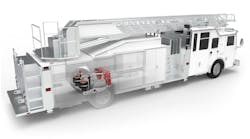Coming to an agreement on the sale or purchase of a used truck can cause immense anxiety for companies and dealerships of all sizes. There are always some risks involved due to the possibility of unforeseen issues that may occur. Moreover, there are typically problems with miscommunication between the buyer and the seller. A best practice to avoid this is for each party to agree to trade terms and conditions.
Basically, these are a written set of guidelines, agreed to by both the seller and the buyer, that establish the condition of a used truck at the time of sale/trade in, explains Steve “Bear” Nadolson of the Bear Marketing Group (bearmarketing.org), which provides consulting and training for the used truck industry. The terms then become the buyer's "sales agreement" to the seller. Items covered by trade terms include the engine, drivetrain, brakes, tires, frame and truck cab/sleeper/ body.
The Used Truck Association (UTA), www.uta.org, has compiled a list of “industry standard” guidelines for trade terms, however, these are not set in stone, he points out. Trade terms are negotiations and can be altered by both parties.
The UTA Trade Terms & Conditions can be found at http://www.uta.org/wp-content/uploads/2014/06/UTA_TradeTerms_11-2010.pdf.
IN THE FUTURE
Trade terms are especially useful when trading in trucks that are to be received at some point in the future, says Nadolson, for example, when waiting for new truck purchases to arrive. The intent here is to ensure that the trucks being traded in will be maintained and turned in a specific agreed upon condition and location at the time of the actual trade in.
Nadolsen, who has more than 34 years of experience selling and buying used trucks, says “trade terms are not locked in” and may be modified. In such cases, the value of any modification will need to be adjusted accordingly. For instance, if the buyer and seller agreed to that the trade in would have “all new tires,” but the used truck was turned in with tires at 50-percent tread, the buyer would either request the seller to replace the tires or lower the overall value of the trade.
This same concept applies to all other conditions on a trade agreement, he says. The more clearly trade terms and conditions are spelled out, and the more specific they are, the better it is for all parties involved so that there are no misunderstandings or surprises when the deal is concluded.
During a large trade deal, there may be an inspection and appraisal process, Nadolson of the Bear Marketing Groups says. By establishing general trade terms and conditions for the entire fleet to be traded in, the truck dealer may be able to avoid the time and expense required to visit and go over what could be 100 or more trucks. "I would always recommend seeing a representative sample of trucks to be traded."
SHARE THE INFORMATION
As the buyer and seller come to terms, Nadolson advises both parties to always put the final trade terms and conditions agreement into writing and to share that agreement in order to avoid potential problems. “Let’s say that a used truck manager has offered trade terms for six months down the road, and it’s all verbal. What happens when that manager changes jobs, dies or simply moves on? How would the buyer know which terms had been reached and if the seller had held up their end of the agreement? The question becomes, ‘What were the terms?’ The answer: ‘We don’t know.’”
In all instances, trade terms should be written down, be as specific as possible and should be signed by both parties so that at the end of the day it’s a written contract. Nadolson says, and stresses the specificity of trade terms and conditions to avoid misinterpretations .
Vehicle mileage can often be a cause of quarrels when trading in a truck, observes Nadolson. He says that when preparing trade terms, it is wise to set a trade-in mileage and to include an assigned monetary value per mile over that limit to compensate for this contract breach.
Another common problem area when coming to trade terms is with tires. Nadolson suggests that tire tread depth be defined in 32nds as opposed to percentages because “percentages can be estimated and valued differently depending on the person taking measurements. For a seller, 50 percent of tread depth might mean 7/32”, while to a buyer, 50 percent might mean between 11/32” and 12/32”. That’s why I recommend that everyone deal in 32nds of tread.”
NOT MEETING TRADE TERMS
What happens when trade terms are not met? For a seller who has not met trade terms, more than likely, there won’t be legal recourse, says Nadolson. The seller will be asked to take the truck back until it is brought up to meets term. As an alternative to that, the buyer can deduct the value from the trade allowance that he thinks it will take to get the truck up to trade terms and conditions. He advises writing down the “defects” and the cost adjustment for each, and providing a copy of this information to the seller. Here again, the intent is to make sure each party “is on the same page.”
With either situation, the seller won’t receive the new truck until the trade has met the terms, says Nadolson. "If neither condition is met your best option may be to call the deal off and do so only after all settlement options have been examined carefully."




